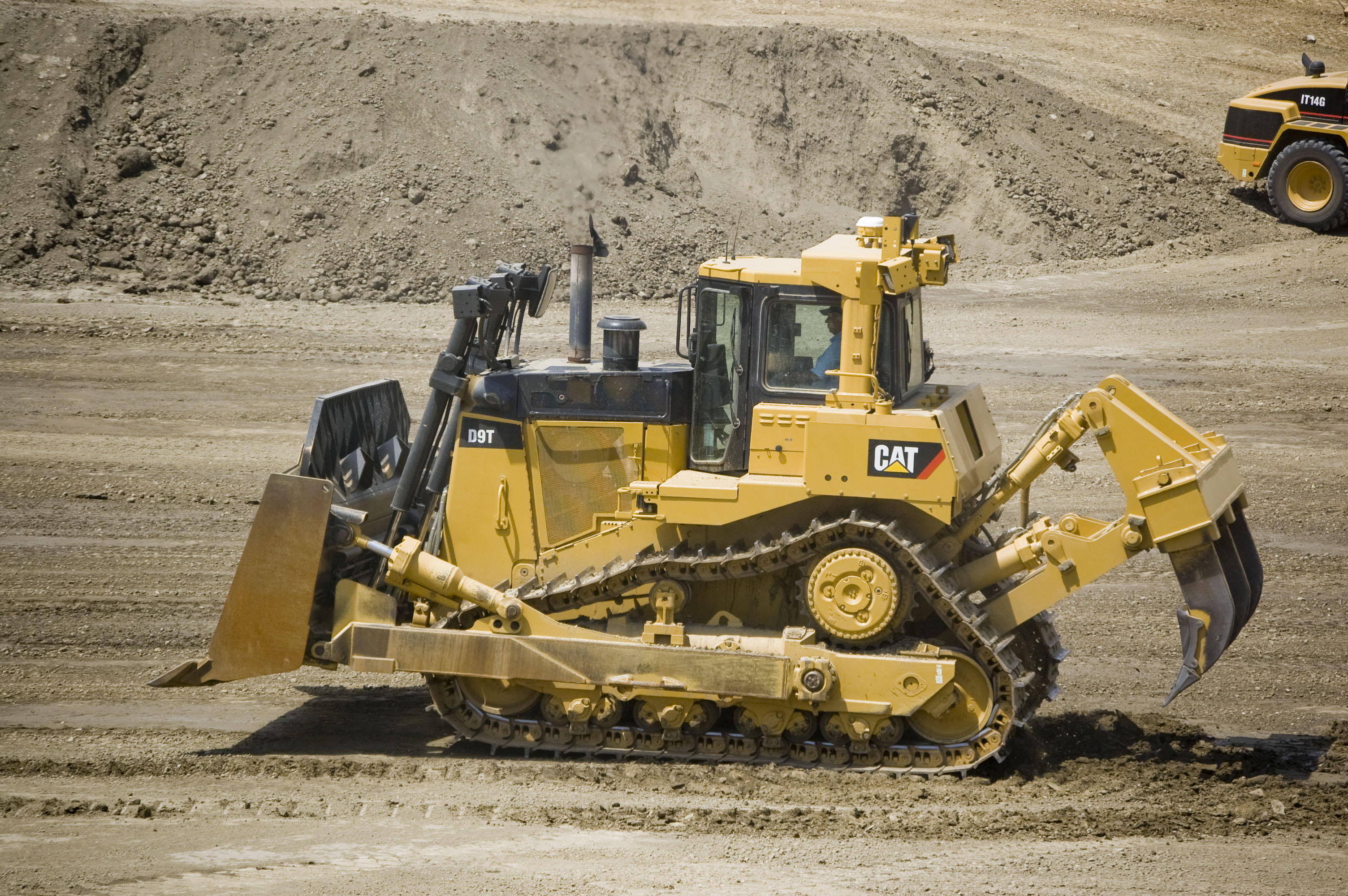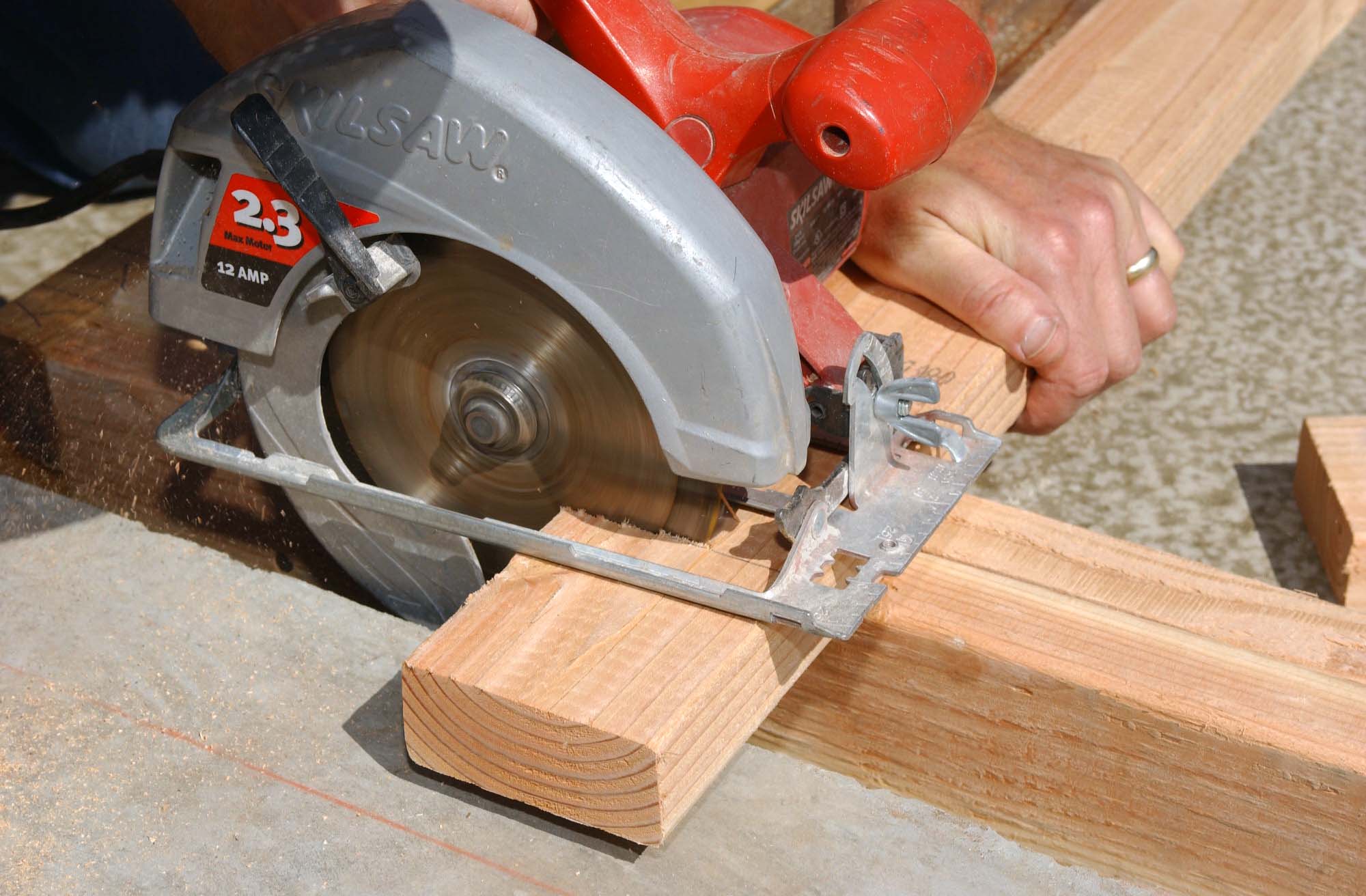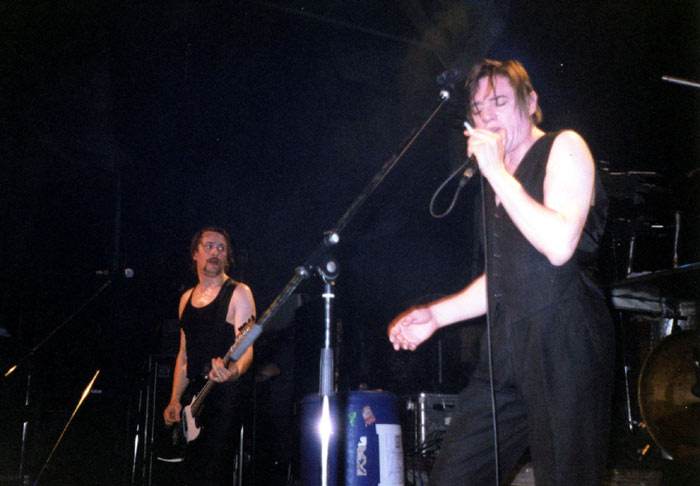|
Hanatarashi
Hanatarashi (), meaning "sniveler" or "snot-nosed" in Japanese, was a noise band created by later Boredoms frontman Yamantaka Eye and featured Zeni Geva guitarist Mitsuru Tabata. The outfit was formed in Osaka, Japan in 1984 after Eye and Tabata met as stage hands at an Einstürzende Neubauten show. After the release of the first album, the "I" was dropped and the name became "Hanatarash". They used a variety of unusual noise-making objects, including power tools, drills, and heavy machinery. Live shows Hanatarash was notorious for their dangerous live shows. Some of the band's most infamous shows included Eye cutting a dead cat in half with a machete, strapping a circular saw to his back and almost cutting his leg off, and destroying part of a venue with an excavator (and not a bulldozer against common beliefs) by driving it through the back wall and onto the stage. At a 1985 show in Tokyo's Superloft, the audience were required to fill out forms due to the possibility of harm ... [...More Info...] [...Related Items...] OR: [Wikipedia] [Google] [Baidu] |
Yamantaka Eye
(born , 13 February 1964) is a Japanese vocalist and visual artist, best known as a member of Boredoms and Naked City. He has changed his stage name three times, from Yamatsuka Eye, to Yamantaka Eye, to Yamataka Eye, and sometimes calls himself eYe or EYヨ. He also DJs under the name DJ 光光光 or "DJ pica pica pica" ("pica" means "bright" or "shiny"), and has used numerous other pseudonyms. Music Boredoms Born in Kobe, Eye is a founder of the influential rock music band, Boredoms, whose first major label release came out in the early '90s. They were signed to Warner Bros. (Chocolate Synthesizer era) by David Katznelson, then A&R VP of Warner Bros. The closest thing Boredoms have to a frontman, Eye offers a variety of vocal techniques: gurgles, screams, grunts and occasionally, relatively conventional singing. In the later days of Boredoms and in today's V∞redoms he plays electronics and open reel tapes. Other Yamantaka Eye is also a member of the bands Hanata ... [...More Info...] [...Related Items...] OR: [Wikipedia] [Google] [Baidu] |
Osaka
is a designated city in the Kansai region of Honshu in Japan. It is the capital of and most populous city in Osaka Prefecture, and the third most populous city in Japan, following Special wards of Tokyo and Yokohama. With a population of 2.7 million in the 2020 census, it is also the largest component of the Keihanshin Metropolitan Area, which is the second-largest metropolitan area in Japan and the 10th largest urban area in the world with more than 19 million inhabitants. Osaka was traditionally considered Japan's economic hub. By the Kofun period (300–538) it had developed into an important regional port, and in the 7th and 8th centuries, it served briefly as the imperial capital. Osaka continued to flourish during the Edo period (1603–1867) and became known as a center of Japanese culture. Following the Meiji Restoration, Osaka greatly expanded in size and underwent rapid industrialization. In 1889, Osaka was officially established as a municipality. The construc ... [...More Info...] [...Related Items...] OR: [Wikipedia] [Google] [Baidu] |
Zeni Geva
Zeni may refer to: * Zeni (letter), a letter of the Georgian alphabet * Zeni, Iran, a village in South Khorasan Province, Iran * Zeni Husmani (born 1990), Macedonian footballer * Zeni (surname), surname See also * Zenigata Heiji , usually called and formerly Heiji Zenigata VII, is a fictional character created by Monkey Punch for his manga series ''Lupin III'', which debuted in ''Weekly Manga Action'' on August 10, 1967. He is named after the famous fictional Japanese ..., a fictional policeman Italian-language surnames Surnames of South Tyrolean origin {{Disambiguation, given name, surname ... [...More Info...] [...Related Items...] OR: [Wikipedia] [Google] [Baidu] |
Noise Musical Groups
Noise is unwanted sound considered unpleasant, loud or disruptive to hearing. From a physics standpoint, there is no distinction between noise and desired sound, as both are vibrations through a medium, such as air or water. The difference arises when the brain receives and perceives a sound. Acoustic noise is any sound in the acoustic domain, either deliberate (e.g., music or speech) or unintended. In contrast, noise in electronics may not be audible to the human ear and may require instruments for detection. In audio engineering, noise can refer to the unwanted residual electronic noise signal that gives rise to acoustic noise heard as a hiss. This signal noise is commonly measured using A-weighting or ITU-R 468 weighting. In experimental sciences, noise can refer to any random fluctuations of data that hinders perception of a signal. Measurement Sound is measured based on the amplitude and frequency of a sound wave. Amplitude measures how forceful the wave is. The e ... [...More Info...] [...Related Items...] OR: [Wikipedia] [Google] [Baidu] |
Molotov Cocktail
A Molotov cocktail (among several other names – ''see other names'') is a hand thrown incendiary weapon constructed from a frangible container filled with flammable substances equipped with a fuse (typically a glass bottle filled with flammable liquids sealed with a cloth wick). In use, the fuse attached to the container is lit and the weapon is thrown, shattering on impact. This ignites the flammable substances contained in the bottle and spreads flames as the fuel burns. Due to their relative ease of production, Molotov cocktails are typically improvised weapons. Their improvised usage spans from criminals, rioters, football hooligans, urban guerrillas, terrorists, irregular soldiers, freedom fighters, and even regular soldiers, in the latter case often due to a shortage of equivalent military-issued weapons. Despite its improvised and rebellious nature, many modern militaries exercise the use of Molotov cocktails. However, Molotov cocktails are not always improvised ... [...More Info...] [...Related Items...] OR: [Wikipedia] [Google] [Baidu] |
Bulldozer
A bulldozer or dozer (also called a crawler) is a large, motorized machine equipped with a metal blade to the front for pushing material: soil, sand, snow, rubble, or rock during construction work. It travels most commonly on continuous tracks, though specialized models riding on large off-road tires are also produced. Its most popular accessory is a ripper, a large hook-like device mounted singly or in multiples in the rear to loosen dense materials. Bulldozers are used heavily in large and small scale construction, road building, minings and quarrying, on farms, in heavy industry factories, and in military applications in both peace and wartime. The word "bulldozer" refers only to a motorized unit fitted with a blade designed for pushing. The word is sometimes used inaccurately for other heavy equipment such as a front-end loader designed for carrying rather than pushing material. Description Typically, bulldozers are large and powerful tracked heavy equipment. T ... [...More Info...] [...Related Items...] OR: [Wikipedia] [Google] [Baidu] |
Excavator
Excavators are heavy construction equipment consisting of a boom, dipper (or stick), bucket and cab on a rotating platform known as the "house". The house sits atop an undercarriage with tracks or wheels. They are a natural progression from the steam shovels and often mistakenly called power shovels. All movement and functions of a hydraulic excavator are accomplished through the use of hydraulic fluid, with hydraulic cylinders and hydraulic motors. Due to the linear actuation of hydraulic cylinders, their mode of operation is fundamentally different from cable-operated excavators which use winches and steel ropes to accomplish the movements. Terminology Excavators are also called diggers, JCBs (a proprietary name, in an example of a generic trademark), mechanical shovels, or 360-degree excavators (sometimes abbreviated simply to "360"). Tracked excavators are sometimes called "trackhoes" by analogy to the backhoe. In the UK and Ireland, wheeled excavators are sometim ... [...More Info...] [...Related Items...] OR: [Wikipedia] [Google] [Baidu] |
Circular Saw
A circular saw is a power-saw using a toothed or abrasive disc or blade to cut different materials using a rotary motion spinning around an arbor. A hole saw and ring saw also use a rotary motion but are different from a circular saw. ''Circular saws'' may also be loosely used for the blade itself. Circular saws were invented in the late 18th century and were in common use in sawmills in the United States by the middle of the 19th century. A circular saw is a tool for cutting many materials such as wood, masonry, plastic, or metal and may be hand-held or mounted to a machine. In woodworking the term "circular saw" refers specifically to the hand-held type and the table saw and chop saw are other common forms of circular saws. "Skilsaw" and "Skil saw" have become generic trademarks for conventional hand-held circular saws. Circular saw blades are specially designed for each particular material they are intended to cut and in cutting wood are specifically designed for making ... [...More Info...] [...Related Items...] OR: [Wikipedia] [Google] [Baidu] |
Machete
Older machete from Latin America Gerber machete/saw combo Agustín Cruz Tinoco of San Agustín de las Juntas, Oaxaca">San_Agustín_de_las_Juntas.html" ;"title="Agustín Cruz Tinoco of San Agustín de las Juntas">Agustín Cruz Tinoco of San Agustín de las Juntas, Oaxaca uses a machete to carve wood. file:Mexican machete.JPG, Mexican machete, from Acapulco, 1970. Horn handle, hand forged blade (hammer marks visible). A machete (; ) is a broad blade used either as an agricultural implement similar to an axe, or in combat like a long-bladed knife. The blade is typically long and usually under thick. In the Spanish language, the word is possibly a diminutive form of the word ''macho'', which was used to refer to sledgehammers. Alternatively, its origin may be ''machaera'', the name given by the Romans to the falcata. It is the origin of the English language equivalent term ''matchet'', though it is less commonly used. In much of the English-speaking Caribbean, such as Jamai ... [...More Info...] [...Related Items...] OR: [Wikipedia] [Google] [Baidu] |
Drill
A drill is a tool used for making round holes or driving fasteners. It is fitted with a bit, either a drill or driverchuck. Hand-operated types are dramatically decreasing in popularity and cordless battery-powered ones proliferating due to increased efficiency and ease of use. Drills are commonly used in woodworking, metalworking, construction, machine tool fabrication, construction and utility projects. Specially designed versions are made for miniature applications. History Around 35,000 BC, ''Homo sapiens'' discovered the benefits of the application of rotary tools. This would have rudimentarily consisted of a pointed rock being spun between the hands to bore a hole through another material. This led to the hand drill, a smooth stick, that was sometimes attached to flint point, and was rubbed between the palms. This was used by many ancient civilizations around the world including the Mayans. The earliest perforated artifacts, such as bone, ivory, shells, and antler ... [...More Info...] [...Related Items...] OR: [Wikipedia] [Google] [Baidu] |
Power Tool
A power tool is a tool that is actuated by an additional power source and mechanism other than the solely manual labor used with hand tools. The most common types of power tools use electric motors. Internal combustion engines and compressed air are also commonly used. Other power sources include steam engines, direct burning of fuels and propellants, such as in powder-actuated tools, or even natural power sources such as wind or moving water. Tools directly driven by animal power are not generally considered power tools. Power tools are used in industry, in construction, in the garden, for housework tasks such as cooking, cleaning, and around the house for purposes of driving (fasteners), drilling, cutting, shaping, sanding, grinding, routing, polishing, painting, heating and more. Power tools are classified as either stationary or portable, where portable means hand-held. Portable power tools have obvious advantages in mobility. Stationary power tools, however, of ... [...More Info...] [...Related Items...] OR: [Wikipedia] [Google] [Baidu] |
Einstürzende Neubauten
(, 'Collapsing New Buildings') is a German experimental music group, formed in West Berlin in 1980. The group is currently composed of founding members Blixa Bargeld (lead vocals; guitar; keyboard) and N.U. Unruh (custom-made instruments; percussion; vocals), long-time contributor Alexander Hacke (bass; vocals), plus Jochen Arbeit (guitar; vocals), and Rudolf Moser (custom-built instruments; percussion; vocals), who both joined the line-up in 1997. One of their trademarks is the use of custom-built instruments, predominantly made out of scrap metal and building tools, and noises, in addition to standard musical instruments. Their early albums were unremittingly harsh, with Bargeld's vocals shouted and screamed above a din of banging and scraping metal percussion. Subsequent recordings found the group's sound growing somewhat more conventional, yet still containing many unorthodox elements. History 1980s On 1 April 1980, made their first appearance, at the Moon Club in West B ... [...More Info...] [...Related Items...] OR: [Wikipedia] [Google] [Baidu] |






